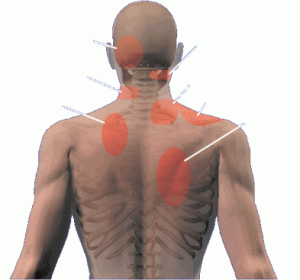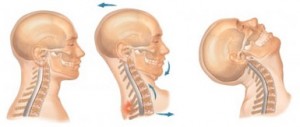Tom Brady Avoids Serious Injury in Car Crash

This morning New England Patriots quarterback Tom Brady was involved in a motor vehicle accident. According to witnesses Brady’s car T-boned an SVU which had allegedly run a red-light. One passenger in the SVU had to be cut from the car and was taken to Brigham and Womens’ Hospital. Brady seemed “shaken up” and initial reports said that he may have suffered from whiplash. Later reports however revealed that Brady “was OK,” did not go a hospital, and was at Gillette Stadium with his teammates.
Whiplash is a soft tissue injury to the neck an is also called neck sprain or neck strain. When a vehicle stops suddenly in a crash or is struck from behind, a seat belt will keep a person’s body from being thrown forward. The head initially continues to move forward, then snaps backward causing the injury. It is characterized by a collection of symptoms that occur following damage to the neck and may include injury to intervertebral joints, discs, and ligaments, cervical muscles, and nerve roots.
 Symptoms such as neck pain may be present directly after the injury or may be delayed for several days. In addition to neck pain, other symptoms may include neck stiffness, injuries to the muscles and ligaments (myofascial injuries), headache, dizziness, abnormal sensations such as burning or prickling (paresthesias), or shoulder or back pain. Besides automobile accidents, whiplash can occur in any situation where there can be rapid accelerations and decelerations such as amusement park rides.
Symptoms such as neck pain may be present directly after the injury or may be delayed for several days. In addition to neck pain, other symptoms may include neck stiffness, injuries to the muscles and ligaments (myofascial injuries), headache, dizziness, abnormal sensations such as burning or prickling (paresthesias), or shoulder or back pain. Besides automobile accidents, whiplash can occur in any situation where there can be rapid accelerations and decelerations such as amusement park rides.
Is there any treatment?
Treatment for individuals with whiplash may include pain medications, nonsteroidal anti-inflammatory drugs such as Motrin or Aleve and muscle relaxants. Range of motion exercises, physical therapy, and cervical traction may also be prescribed. Supplemental heat application may relieve muscle tension. In the past, whiplash injuries were often treated with immobilization in a cervical collar. However, the current trend is to encourage early movement instead of immobilization. Ice might be applied for the first 24 hours, followed by gentle active movement.
What is the prognosis?
Generally, prognosis for individuals with whiplash is good. The neck and head pain clears within a few days or weeks. Most patients recover within 3 months after the injury, however, some may continue to have residual neck pain and headaches.
For more information about whiplash, click here to go to the Resounding Health casebook on whiplash.




























0 comments